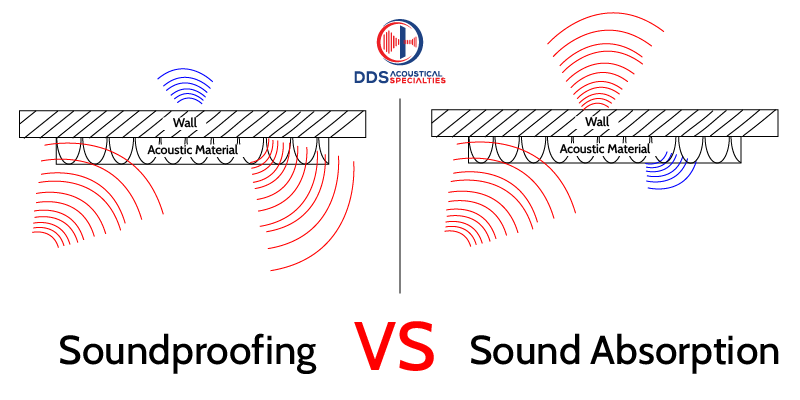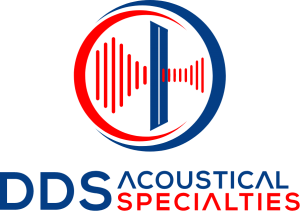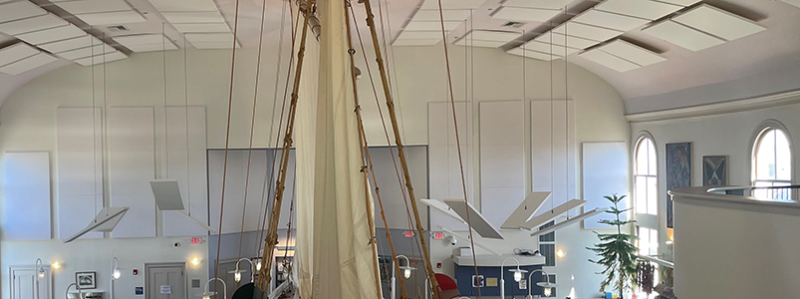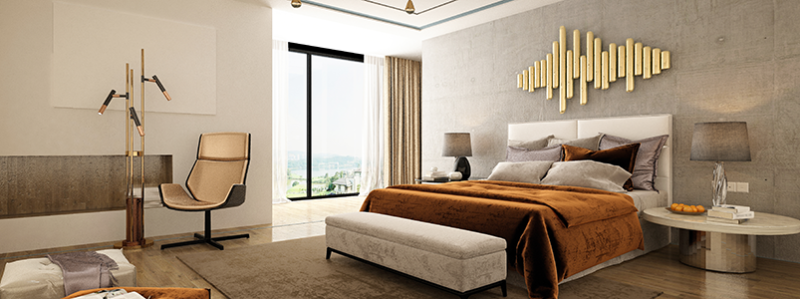
Soundproofing Vs. Sound Absorption
Sound is both an art and a science. You can get hung up on all the terms and calculations but you can also understand it more simply. One major aspect of sound is that it is like water. It can mold, meld and take the form of its surroundings. Sound, much like water, can be absorbed by some materials and contained by others. This is why we offer both and make the distinction between soundproofing materials and sound absorbing materials. Each type of materials serves a difference purpose which will be covered in this article, soundproofing vs sound absorption.

What’s the difference between soundproofing and sound absorption
The biggest difference between soundproofing and sound absorbing is that soundproofing is the process of blocking noise and sound absorption is the process of absorbing sound waves to reduce echo, reverberation, and noise build-up.
Soundproofing products are often used in residential, construction, industrial, and some commercial applications. They are used to make spaces private, block loud exterior noise, and protect employees from loud machine noise.
Sound absorption products on the other hand are often used in spaces where there is a lot echo and poor sound quality. They do not stop the transmission noise, the only absorb noise, thus preventing it from reflecting off surfaces. They improve speech intelligibility in spaces like restaurants, breweries, meeting rooms, libraries, churches, and any area where echo is an issue.
Many DIYers run into trouble because they mix up these terms and invest in the wrong product. This is why working with an acoustical expert can be so important. We listen to the problem and know how exactly to solve it. Sometimes you need soundproofing, sound absorption, or both. They each offer unique benefits and are suited for different purposes.
Soundproofing or Sound Blocking
Soundproofing, also referred to as sound blocking uses materials that reduces the level of sound entering or leaving an area.
Materials used to block sound are sound barriers. Many things can be a sound barrier, its more a matter of how well does that sound barrier perform.
The main concept behind soundproofing is that the addition of mass to a barrier increases sound transmission loss. Therefore, products used to block sound are often heavy and sturdy. They are not soft or porous like their sound absorber counterpart.

Accomplished through use of products such as Mass Loaded Vinyl Barrier, Curtain Panels, and Metal Walls, soundproofing creates quieter, more private spaces.
Another method that improves sound transmission loss is the introduction of an air gap between two barriers. In the industry we call this dead air and it can range from inches to feet, providing the space doesn’t allow sound to reflect and amplify within it.
A final option for blocking sound is to decouple a wall/barrier. This means fixing each barrier to separate studs/partitions so that vibrations are prevented from transferring between them.
Sound Absorption

Sound absorption is the process that takes in the energy of sound, rather than reflecting it. This the level of echo and reverberation in a space and prevents noise build-up.
Materials used to absorb sound are soft and porous and cover hard, reflective surfaces. Common sound absorbers are fiberglass, foam, and felt. Depending on the type of product, thickness, and facing, absorbers perform to various efficiencies.
Sound absorbers make it easier to hear in a space. Whether it’s music, a performance, or conversation.
Combining Soundproofing and Sounding Absorption
In many situations having both sound absorption and soundproofing is ideal. You get the best of both worlds, plenty of privacy and protection from outside noise as well as a room with high sound quality. A common example of this is an office conference room. Soundproofing provides the privacy from those outside and sound absorption help improve in-person, phone, or virtual conversation intelligibility.
Sound absorption in a space also increases the efficiency of a sound barrier. We call products with both absorption and barrier a composite.
Conclusion – Soundproofing vs Sound Absorption
Now that you understand the differences between soundproofing and sound absorption, you may think you’re ready to start planning a project. As mentioned before, it is always best to seek the help of an acoustic professional like us who can run calculations and recommend a solution and product options.
For information on more acoustic terms, take a look at our growing list to help you navigate the world of acoustics. Check out this related article on the difference between STC and NRC ratings.
-
April 11, 2024
Acoustic Improvements at Provincetown Public Library
-
November 16, 2023
How to Soundproof a Room
-
September 26, 2023
Quieting the Racket: Understanding Pickleball Noise and Effective Solutions




